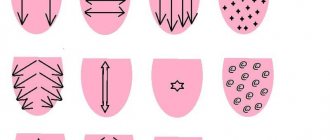Speech abilities are given by nature, but they are not always ideal. Sometimes speech sounds slurred, which can negatively affect a person’s entire life. It is hardly possible to build a good career if words are forced to break through the “mess in your mouth.” How to improve diction? Are there special exercises? Let's talk about this.
Breathing exercises
To improve your diction and clarity of speech, you need to learn how to breathe correctly. The following exercises will help with this:
- We stand straight. Feet shoulder width apart. Palms lie on the belt. Inhale freely. We exhale air through pursed lips so that its resistance is felt. This exhalation must be done while moving. Imitate working with a scythe, an axe, cleaning the house with a broom/vacuum cleaner, and similar movements. You need to learn to exhale evenly, without tension (tension should be felt in the lower costal muscles).
- As you inhale, slowly bend forward. The back remains straight. Then we straighten up. We exhale and begin to draw out the word “gimmmm”, while simultaneously walking in place.
- As you inhale, slowly lean forward, spread your arms to the sides, and close them behind your head (at the back of your head). We straighten up as we exhale and chant the sounds “GN”, walking in place.
- Mouth closed. We take a short breath through the nose. While exhaling, tap your fingers along the edges of your nostrils. Exercise improves nasal breathing. Now we add a new element: while exhaling, we make the sounds “M” and “N”.
- The mouth is open. We inhale through the nose. Exhale slowly through your mouth.
- Self-massage. With a little effort we press through the intercostal muscles, then move on to the abdominal area. This helps stimulate local blood circulation.
We are working on the quality of diction
Doing certain exercises will help you improve your diction. Classes must be carried out daily, because only in this case can you get quick results.
Exercises to improve speech and diction include training the muscles of the palate.
- Slowly say the sounds “K” and “G” 3 times in a row. Then pronounce the sounds “A”, “O”, “E” with your mouth practically closed.
- Imitate mouth rinsing. The sensation should be similar to that of water in your mouth.
- The mouth is slightly open to the width of two fingers. Say the syllables “AMM-AMM.” At the same time, “A” sounds in a whisper, and “M” is loud and ringing.
To improve your speech and diction, you need to perform exercises to relieve muscle tension.
- Write a tongue twister on a piece of paper. Say it out loud, voicing only consonant sounds. In place of vowels there are gaps. Then repeat it in a full voice. This will help you understand in what position the articulatory apparatus is not working correctly.
- Take a deep breath and pinch your nose with your fingers. Read any text out loud. Exhale. Start reading the text again, taking breaths in the places necessary for the meaning (in accordance with the grammatical pauses).
Articulation gymnastics
If you are interested in how to improve your speech diction quickly, then you need to practice articulatory gymnastics. Regular training of the speech apparatus guarantees improvement of diction in the shortest possible time.
The complex includes the following exercises:
- A wide smile on his face. Teeth clenched. We fix the position for 10 seconds. Then we relax. An important point: both rows of teeth must be completely visible.
- Teeth clenched. The lips are folded into a tube, extended forward. We make the sound “U” for 10 seconds.
- The mouth is open, the tongue is pushed forward as far as possible. We fix the position for 5 seconds. Relaxing the muscles.
- The mouth is open. The tongue lies on the surface of the lower lip. Open your mouth as wide as possible and relax.
- Relax your lower jaw and fix this position. Lick your upper lip, extending your tongue as far as possible.
- Touch the tip of your tongue alternately with the upper and lower lip, pushing it forward. Do the exercise at a leisurely pace. The chin should remain motionless the entire time.
- Mouth closed. Use your tongue to apply pressure to the inner surface of your cheek, applying force for 4 to 6 seconds. Repeat on the opposite side.
- The lower jaw is lowered downwards. We make movements from side to side with it. Keep your head straight. She does not participate in the movement. Then we move the jaw forward/backward.
- There's a full smile on your face. We run the tip of the tongue along the inner surface of the lips. First along the top, then along the bottom, then we make a circular movement. The jaw is constantly fixed and does not move.
- A wide smile on his face. We run our tongue along the surface of the teeth, first the upper ones, then the lower ones. The jaw is fixed and does not move.
- A wide smile on his face. We run our tongue along the lip from corner to corner. Lips and jaw do not move. It is necessary to touch the surface of the lips, not the teeth.
- Stand straight, arms on chest (crossed). We bend forward slowly while inhaling, while loudly voicing the letters “O” and “U”.
The clarity of the pronunciation of sounds is ensured by the tip of the tongue. To improve diction, you need to improve your mobility.
- Use your tongue like a hammer, tapping your teeth with it. During each strike, pronounce the syllable “YES”. Then say the letters "T" and "D".
- To improve speech diction, it is necessary to develop the muscles of the larynx. This will help to establish clear pronunciation of the sounds “K” and “G”. We inhale through the nose and release the air through the mouth. As you exhale, begin to puff like a hedgehog - “FU-FU-FU.” The syllable is pronounced sharply.
- Training your lip muscles will help improve your speech and diction. This exercise improves the pronunciation of the sounds “P” and “B”. We puff out our cheeks and slam them together with our hands, just like in childhood.
Additional exercises
The ability to control the volume of air in the lungs will help improve diction and clarity of speech.
Stand in front of the mirror and read any text out loud with expression. First, do it in your usual voice. Then read it again, but much louder. By doing this exercise daily, you will soon learn to control how full your lungs are and will be able to easily deliver speeches of any size.
To improve diction in adults, the following exercise will help:
- Write the lines of your favorite poem on a piece of paper.
- Cross out all the consonants and sing the remaining vowels out loud.
- Then insert all the consonants again. Pronounce them loudly, loudly, continuing to sing the vowel sounds.
Performing a set of articulation exercises will help improve your speech and diction very quickly.
Ksenia Chernova
Speech coach, actress, TV presenter, author of the book “Speak Like God”
Usually people rarely ask the question “Why dress nicely?” or “Why walk around with a washed hair and straight teeth?” (we are, of course, talking about a certain category of people who care what they look like and what impression they make). It's the same story with the voice.
Voice is part of our personality, part of our characteristics by which people read information about what we are like. If we are visually beautiful, but we open our mouths and begin to creak, mumble, mumble words, speak quietly, uncertainly, with defects - the world of those around us literally collapses. They don’t understand; they have a kind of cognitive dissonance between what they see and what they hear. And if we want to create the right impression of a professional, confident person who knows what he wants, we must speak no worse than a minimally trained TV presenter. And it's not difficult.
The voice is a very flexible and malleable structure that can change in the same way that our body can change.
But if in the case of the body this is a long process, at least 3-6 months, then you can train your voice quite quickly. Moreover, you can see some first but significant changes in, say, 16 hours of training (that’s two days of full-fledged training and training), and the rest is a matter of regularity.
Having received a voice that he likes, a person begins to feel completely different - to feel real, more confident, and in control of the situation. The voice is a workout. Breathing, sound, and articulation training. And also - regular conscious control during the conversation: it is important to at least think about how I breathe, where I sound, whether I have lost my resonator, on which it is convenient for me to speak, whether my mouth opens, whether my tongue works well ...
All these points are a matter of discipline, as in any matter that we want to do well. Like any habit, like any restructuring in the body, mind, body, voice and speech training - everything takes time. For some it’s two weeks, for others it’s a month, and for others seven days is enough. It is impossible to predict exactly when speech training will become a permanent skill in life, but if you are systematic enough, it will definitely happen and is unlikely to take more than a month. My goal during the training process is to make sure that people enjoy the way they speak and sound. The correct sound usually comes from a well-stretched and relaxed body, this is the result of the correct adjustment of the muscles, when the body does not get tired of speaking, but enjoys the fact that it sounds full.
What is speaking technique? By and large, this is the sum of correct breathing, sounding in the right places, correct opening of the mouth and functioning of the articulatory apparatus and, most importantly, filling this entire form with content - your nature, sincerity, emotions and energy. This is exactly what people react to, because the main thing is when we, in addition to having a beautiful sound of voice, also know how to convey to them everything that we have.
Improving voice timbre
To improve diction and voice timbre, an adult needs to perform special exercises. It is impossible to make changes to natural data, but decorating them is an achievable task.
We improve the sound of our voice using the following exercises:
- Stand straight. The chin is fixed in a natural position. We stretch our neck as far forward as possible, and fixate for a few seconds.
- Open your mouth, push your tongue as far forward/down as possible. The head is bowed to the chest. Raise your tongue to the tip of your nose while lifting your head. While moving, stretch your neck as far as possible.
- We take a deep breath. While exhaling, pronounce the word “BOMM” loudly, stretching out the last letter as long as possible. You should feel a slight vibration at the tip of your nose and upper lip.
- Full breath. We release the air from the lungs, pronouncing the syllable “MI-MII”. The first part is short, the second - in a drawn-out singsong voice.
- Stand straight, hands on your chest. As you inhale, bend forward and chant the letters “U” and “O”. After this, chant the words “MILK”, “FLOUR”, “TIN”.
- Click your tongue, gradually changing the position of your lips. At first they are gathered into a tube, at the end they are stretched into a full smile.
- The mouth is open, the nose is pinched with the fingers. We breathe through our mouths and at the same time read any text out loud. The duration of the exercise is 5 minutes.
- Head down, chin pressed to chest. We exhale, pronouncing the sounds “O” or “U” until the air runs out. We place our hand on the chest and, by patting, increase the vibration of the sound.
These exercises guarantee improvement in speech and voice timbre in a short time.
ACTIVE GYMNASTICS: GAMES TO DEVELOP SPEECH USING FINE MOTOR SKILLS
Game aids:
- Butterflies made of colored paper
- Leaves of colored paper
- Pinwheel
- Cotton balls
- Paper boat
Games for children from 2 months:
- That's how different they are. Objects of various textures and shapes are placed in the child’s hand. The baby must grab the object and hold it for a while. This exercise develops not only motor skills, but also tactile sensations. It’s good if you comment on what is happening: “This ball is smooth,” “This hedgehog is prickly,” etc.
Games for children from 9 months:
- Prefabricated nesting dolls. First you need to collect one doll, then gradually complicate the game; after 2 years it should be a triple matryoshka.
- Pyramids. First you need to use a classic pyramid, the size of the rings of which decreases towards the top.
- Trace along the outline. You need to make cards with images of objects known to the baby, for example, a house, a tree, a car, and paste over their outlines with velvet paper. The essence of the game: an adult guides the baby’s finger along the contour and names the object. Then the outline is covered with beads or peas and the game is repeated.
- Cups and spoons. The child uses a spoon to pour sugar or semolina from one cup to another. You can also transfer beans, peas or nuts by hand.
- Modeling from plasticine. You need to start with a cylinder, and over time complicate the tasks: a ball, a carrot, a snake.
During the games, do not forget to comment on your actions and explain to your child everything that you do.
Games for children from 1 year:
- Strong palms. The child squeezes rubber toys. The best thing is the rubber hedgehog: the needles act like a massager.
- Mosaic. First you need to lay out simple shapes: paths, flowers, squares, and then move on to more complex ones: houses, cars, Christmas trees.
- Constructor. The size of the parts and the complexity of the design depend on the age of the baby: you need to start with the largest parts and the simplest structures, for example, building a turret.
- Beads. The size of the beads also depends on the age of the child. First, instead of beads, you can use balls from pyramids with round parts and string them on a thick cord; then the size of the parts must be gradually reduced, moving on to real beads. For the exercise, medium-sized beads already strung are used. The goal is to teach the child to lay out the outlines of objects from beads. For example, you can lay out a circle, square, heart, spiral, etc.
- Laces. Since lacing has different contents, it makes sense to play with the lacing process - for example, ask the child to sew a dress for his mother (lace-button) or lace shoes (lace-boot).
- Magic tray. Sprinkle a thin layer of semolina onto a tray and run the child’s finger over the cereal. The child is then shown how to draw various shapes. At the age of 2 - 3 years, you can draw numbers and letters.
- Multi-colored clothespins. The essence of the game is to teach the child to independently attach clothespins, and to make the game interesting, you can do this according to a thematic principle: rays to the sun, needles to the hedgehog, rain to the cloud, grass to the ground. Of course, for this you first have to make preparations. This is a rather difficult task for a child. Don't try to achieve results right away. To begin, take the baby’s hands in yours and do the exercise with him.
- Cinderella. You need to mix white and red beans and ask your child to sort them by color.
- Funny pictures. Spread the plasticine evenly over a sheet of cardboard and show your child how to lay out drawings using peas.
- Counting sticks. Show your child how to use counting sticks to lay out different shapes. It is advisable that the counting sticks are not smooth, but ribbed: this serves as an additional massage for the fingers.
- Little sculptor. Dough modeling (dough recipe: 1 cup flour, 1/2 cup salt, a little water). The advantage of dough over plasticine in this case is that the crafts can subsequently be used as toys.
- Fasten the button. You will need two pieces of thick fabric. On one of them, sew three buttons of different diameters, in the second, cut loops of appropriate size. First, show your child how to fasten the buttons, commenting on your actions: “We insert the large button into the large buttonhole, the medium button into the middle one, and the small button into the small one.” Then take the child's hands in yours and repeat the exercise. After this, you can invite the baby to try to fasten the buttons on his own. Don’t insist if the baby doesn’t want to or if he can’t do it. This is a very difficult exercise and requires practice to perform successfully.
- Stencils. It is recommended to start with stencils for internal tracing (it is easier for a child to trace inside than outside) and with the simplest shapes (circle or square). Practical advice: you can buy ready-made stencils, but it is better to make them yourself. The fact is that most standard stencils are small in thickness, and it is inconvenient for a child to trace them, since the pencil keeps slipping off. Therefore, the stencils must be quite voluminous. A good solution is to cut them out of a piece of linoleum or a shoebox.
Working on speaking skills
How to improve your speech diction quickly? To achieve results, you will need to work on your speaking skills.
The recommendations will be as follows:
- The voice should not be monotonous. To improve your speech and diction, you need to learn to speak emotionally. It is necessary to master the ability to change tonality. This will help the other person understand whether you are asking a question or asserting something.
- Contents of the conversation. Learn new words to enrich your vocabulary. This way you can improve your speech and diversify it. It is advisable to avoid tautologies and frequent repetition of the same words.
- Words with unknown meaning. If you don't know the meaning, it's better not to use it in conversation.
- Try to get rid of parasitic words.
The tips are very simple, but significantly improve your speaking skills.
FINGER THEATER
Finger theater is an exciting game that:
- Stimulates the development of fine motor skills;
- Introduces the child to the following concepts of shape, color, size;
- Helps develop spatial perception (the concepts of “right”, “left”, “next to each other”, etc.);
- Develops imagination, memory, thinking and attention;
- Helps develop vocabulary and activates speech functions;
- Forms creative abilities and artistic skills;
- Introduces basic mathematical concepts.
For children aged 1 – 2 years (using the example of the fairy tale “Kolobok”):
- First, introduce your child to the characters in the fairy tale. Invite your child to look at and touch the figures. Then put each character on your finger in turn and describe it.
- Introduce your child to the name of each finger on his hand. For example, you can say this: “I have a Kolobok sitting on my index finger.”
- Then act out a fairy tale for your child. Place the characters on your fingers and cross your arms. Start telling the story, raising your fingers with the characters as the action progresses. For example, the fairy tale “Kolobok” can be told as follows. Thumbs up with Grandma character. Tell your child that today this hero will bake Kolobok. Rhythmically tap the heels of your palms against each other without releasing your fingers. At the same time, say: “Grandma is kneading the dough.” Using the same principle, play up the appearance of each character.
For children aged 2 – 4 years (using the example of the fairy tale “Kolobok”):
- Ask your child if he remembers the fairy tale “Kolobok”. Remind him if necessary.
- Then ask your child to place the characters on the table in the order they appear in the story. At the same time, ask to characterize each of them according to the principle: “Grandma is old, kind, caring; Kolobok is round, ruddy, mischievous,” etc.
- Ask your child questions about the fairy tale. For example: “Why did grandma decide to bake Kolobok? Why did he leave his grandmother and grandfather? Who did he meet on the way?
- Then act out a fairy tale in front of the little spectator using a finger theater.
- At the end, ask your child to act out a fairy tale in front of you using a finger theater. If necessary, prompt him.
Pure talk
To improve diction and speech itself, you need to work on the pronunciation of pure words. This will help you practice specific sounds using specially rhymed phrases.
They differ from tongue twisters in that they contain one consonant sound many times. This will help you learn to pronounce complex sounds and improve your diction. You need to exercise every day. Improvement in speech after working with pure tongues happens quite quickly.
You need to pronounce pure phrases at a slow pace. It is very important to carefully pronounce each sound, paying attention to sound combinations that are difficult for you.
You must definitely control your pronunciation. This lesson must be recorded on a voice recorder. While listening to the recording, you can identify any pronunciation errors that have been made and correct them during the next one.
Useful tips for improving diction
There are several tips that will help you achieve success in self-study:
- first you need to start doing the simplest exercises to improve speech and diction, gradually including more complex ones;
- classes should be carried out in any free time - this will help achieve results in a short time;
- It is advisable to do gymnastics daily, without taking breaks;
- make it a rule to periodically record short speeches on a voice recorder - this will help you celebrate your achievements;
- read additional literature and regularly practice new exercises, since the monotony of exercises can cause moral fatigue and refusal to exercise;
- If you have the opportunity to get advice from specialists, then you should not refuse it, as this is an excellent opportunity to receive additional practical advice.
If a person has the opportunity to attend theater courses, then this should be done. Classes with professionals will help you relax, develop diction and master free speech. Experts will teach you expressive recitation, while diction, if not perfect, will improve significantly. And public speaking will no longer seem like an impossible mission.









